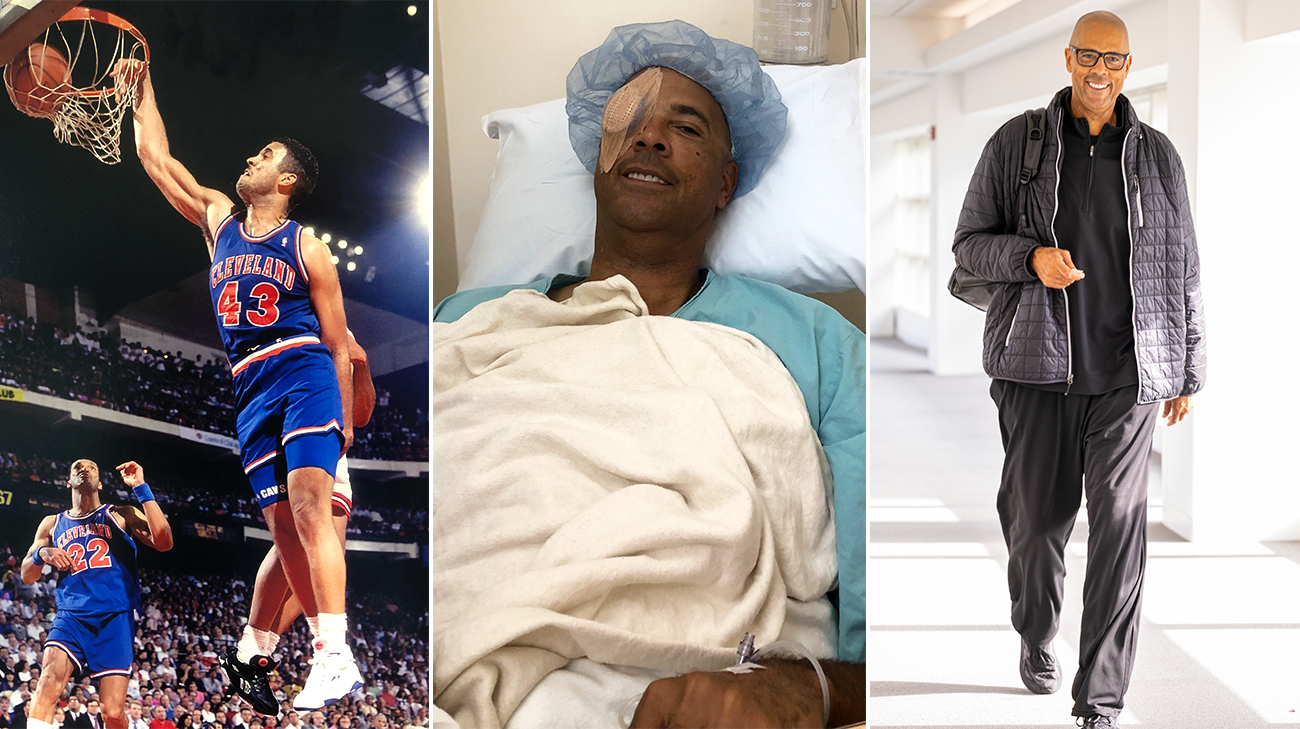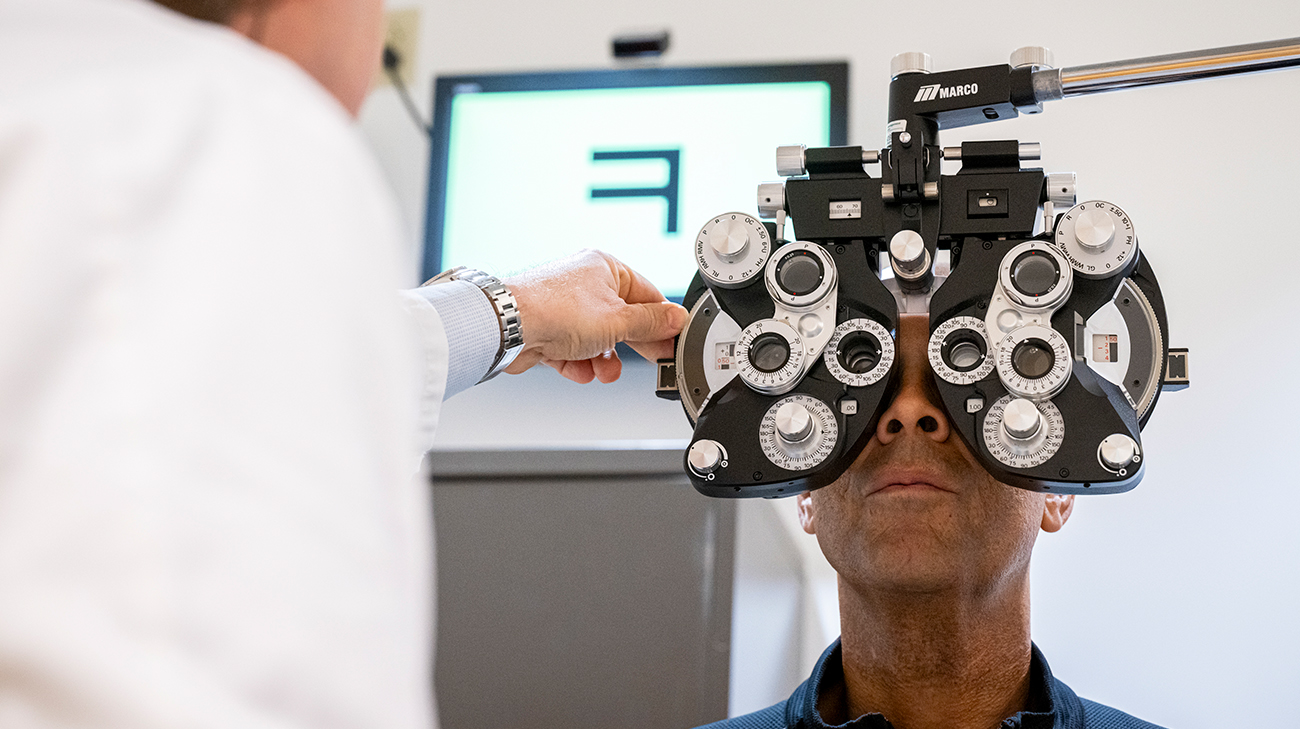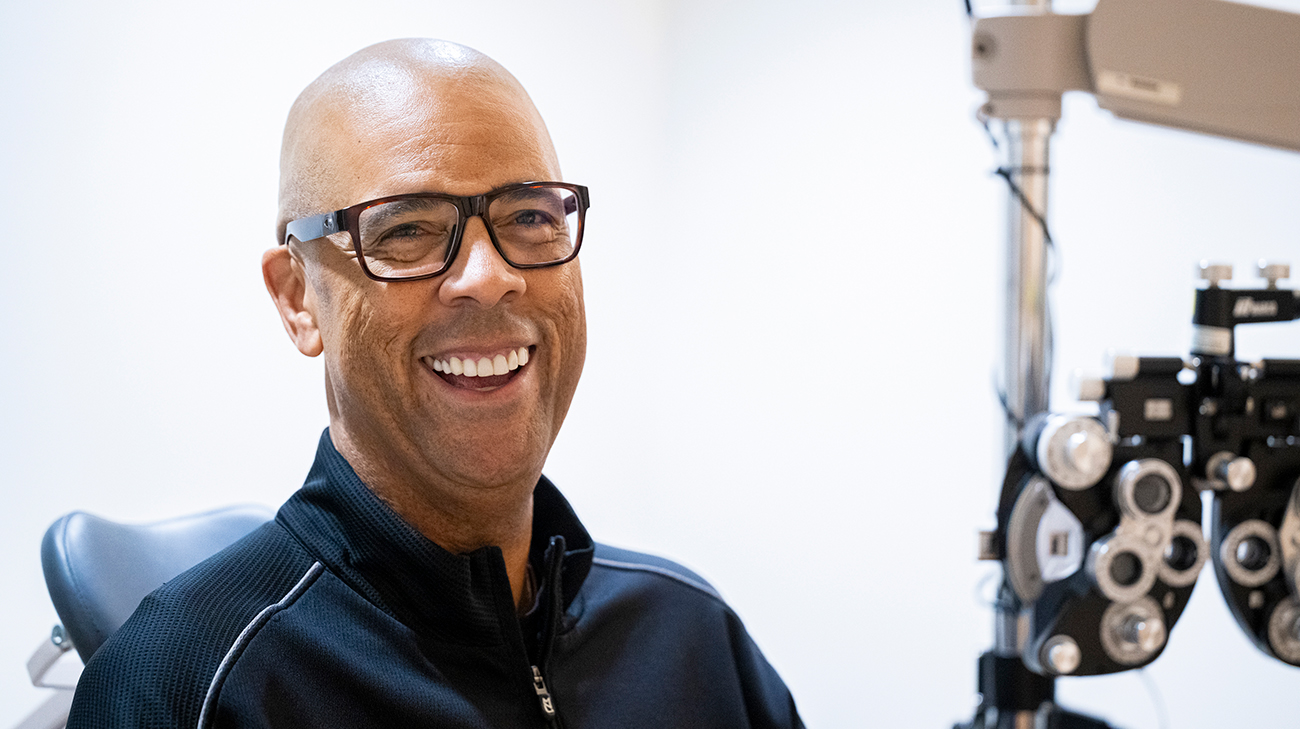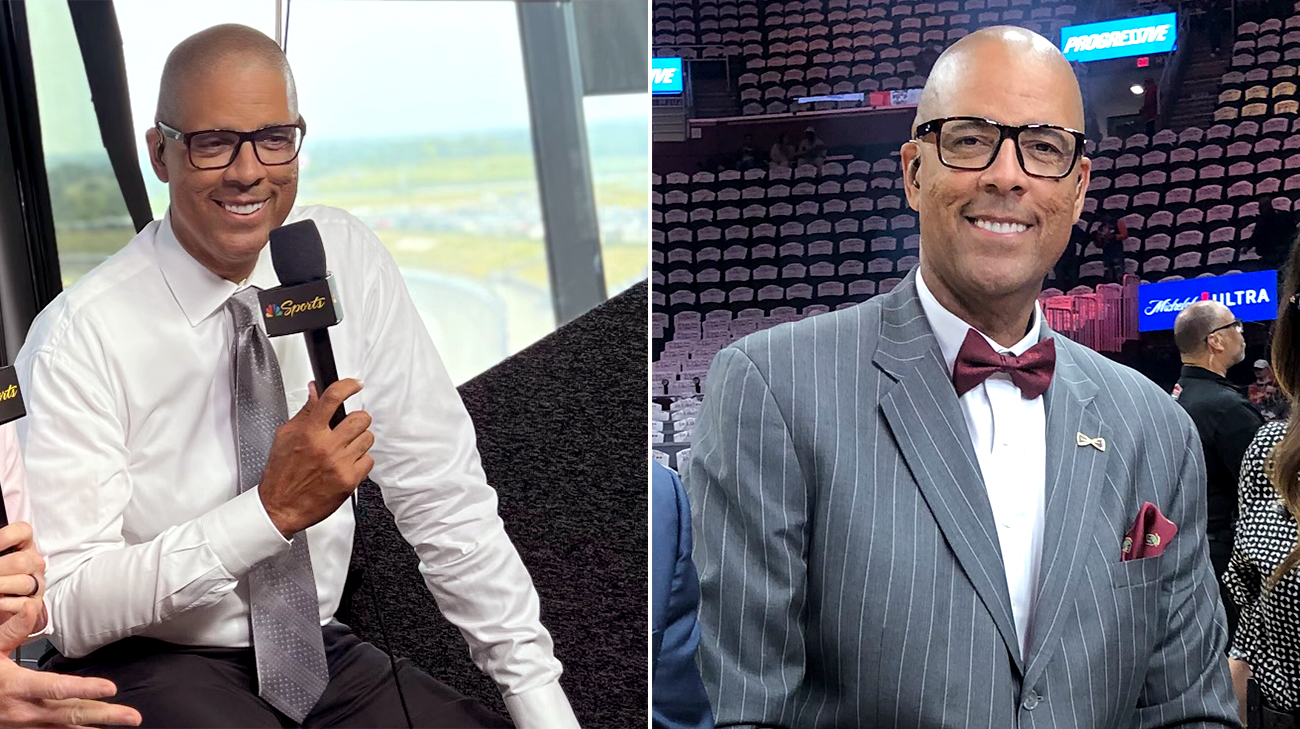
As a former Cleveland Cavaliers player and current NASCAR team owner, 58-year-old Brad Daugherty is always on the move. The five-time NBA All-Star describes himself as hyperactive and enjoys spending time with his grandchildren and teeing off on the golf course when he’s not broadcasting for the Cavs or managing his racing team. But it became increasingly harder to enjoy all his passions when he started experiencing issues with his vision.
“While golfing, I was starting to have trouble seeing the golf ball. The ball would take off, and it’d just be gone,” says Brad.
Brad started noticing what he describes as a speck in his right eye. He didn’t think anything of it at first but then started seeing what looked like a cobweb. He followed up with a doctor who said he had a vitreous fluid leak, causing him to experience eye floaters, which occur when your vitreous changes its thickness. After undergoing three eye surgeries in the ensuing months, his vision continued to worsen.
“I still couldn’t see a thing out of my right eye after weeks of recovering. I was frustrated because it seemed like I was losing my vision. I also had a cataract in my other eye I needed to have fixed,” says Brad.
While golfing in Florida one day, he met someone who mentioned Cleveland Clinic, which Brad was familiar with from his time as a Cleveland Cavalier. Brad ultimately got in touch with ophthalmologist Rishi Singh, MD, for a second opinion.

Brad came to Cleveland Clinic for a second opinion after his eyesight wasn’t improving following multiple procedures. (Courtesy: Cleveland Clinic)
“Brad was nearsighted and had a history of prior laser vision correction procedures. When he first came to us, his vision was quite poor. He had legal blindness in his right eye essentially,” says Dr. Singh.
Since Brad had undergone multiple eye surgeries in a short time, his Cleveland Clinic care team decided to wait to perform any corrective vision procedures as there were no emergent issues. They wanted to avoid putting any more pressure on his retina. Brad ultimately went back to California where he was staying at the time.
“A few months go by and one day I see what looks like a bullseye in my right eye. It’s just kind of rolling around at the bottom of my eye,” says Brad. Brad reached out to Dr. Singh, who referred him to a retina specialist in California. “The retina specialist looks at me and says, ‘Your retina detached, and we’ve got to get this fixed.’”
A retinal detachment is a painless but serious eye condition that happens when the retina, or the layer of tissue at the back of the eye, detaches from the tissues supporting it. A detached retina affects your vision and can lead to blindness.
After addressing the retinal detachment in his right eye, Brad returned to Cleveland Clinic’s Cole Eye Institute to undergo follow-up procedures. Silicone oil was used to push Brad’s retina back in place during his surgery to address the retinal detachment in his right eye. That oil needed to be removed after the procedure, so Dr. Singh drained it and worked with the team to address any outstanding issues with Brad’s retina. His care team then pivoted toward how they could improve his vision overall. This included a collaborative surgery between Dr. Singh and ophthalmologist William Dupps, MD, PhD, to replace a lens that had become cloudy because of the oil. Before coming to Cleveland Clinic, the lens was placed in his eye to improve his vision.

Following his procedures at Cleveland Clinic, Brad says he continues to see improvements with his eyesight. (Courtesy: Cleveland Clinic)
“The lens replacement surgery was probably the most intricate, especially given his prior history and complications,” says Dr. Singh. “Dr. Dupps and I partnered together on this procedure to place the lens in the right position and ensure there were no retinal issues. A big theme here is the importance of a team-based approach to care.”
Dr. Singh says Brad also had a retinal tear in his left eye they addressed to avoid another retinal detachment as well as a cataract, which are cloudy areas that form on the lens of the eye. Brad says his right eye is still recovering following the procedures, but he can see well out of his left eye – marking a drastic difference in his overall vision.
“I'm starting to play golf decently again, and I'm back to jogging, working out, playing with my grandkids – doing all the things I like to do. It's giving me my quality of life back,” says Brad. “My vision problems shut me down for over a year, and I didn’t know if I was going to be able to do some of these things again.”
Brad says he continues to see improvements with his vision. He’s thankful for his care team, which includes Drs. Singh and Dupps as well as optometrist Jason Marcellus, OD.
“They've been a lifesaver for my vision. I feel safe when I'm with these folks, and they're just the best in the world at what they do,” says Brad. “If I have anything going on, eyes, heart, whatever, I'm going to Cleveland Clinic."

Brad remains busy through broadcasting gigs, managing a racing team and more. He looks forward to enjoying the activities he loves again with his improved vision. (Courtesy: Brad Daugherty)
Brad is sharing his story to help show the importance of making vision health a priority and of finding the right care team no matter what health issues a person is facing. He continues to follow up with his doctors and looks forward to the future as his vision recovers.
“I’ve got analysis to do for the Cavs, I’ve got racing to do in the summer, and I’ve got two grandboys I have to teach how to hit baseballs, golf balls and shoot basketballs. I need these eyes healthy,” says Brad.
Related Institutes: Cole Eye InstitutePatient Stories
Perseverance and Focus Help Ovarian Cancer Survivor Beat the Odds HIPEC During Surgery Helps Keep Disease Under Control
Dec 10, 2025
Boy With Advanced Liver Cancer Thriving After Lifesaving Living Organ Donation From Aunt
Dec 8, 2025
Against All Odds A Journey of Recovery After Stroke
Dec 5, 2025
“Dr. Pervez is absolutely incredible, I can’t say enough about him and the speech therapy department. And Cleveland Clinic is phenomenal. They’ve always been wonderful, and I recommend them to everyone I talk to.”


